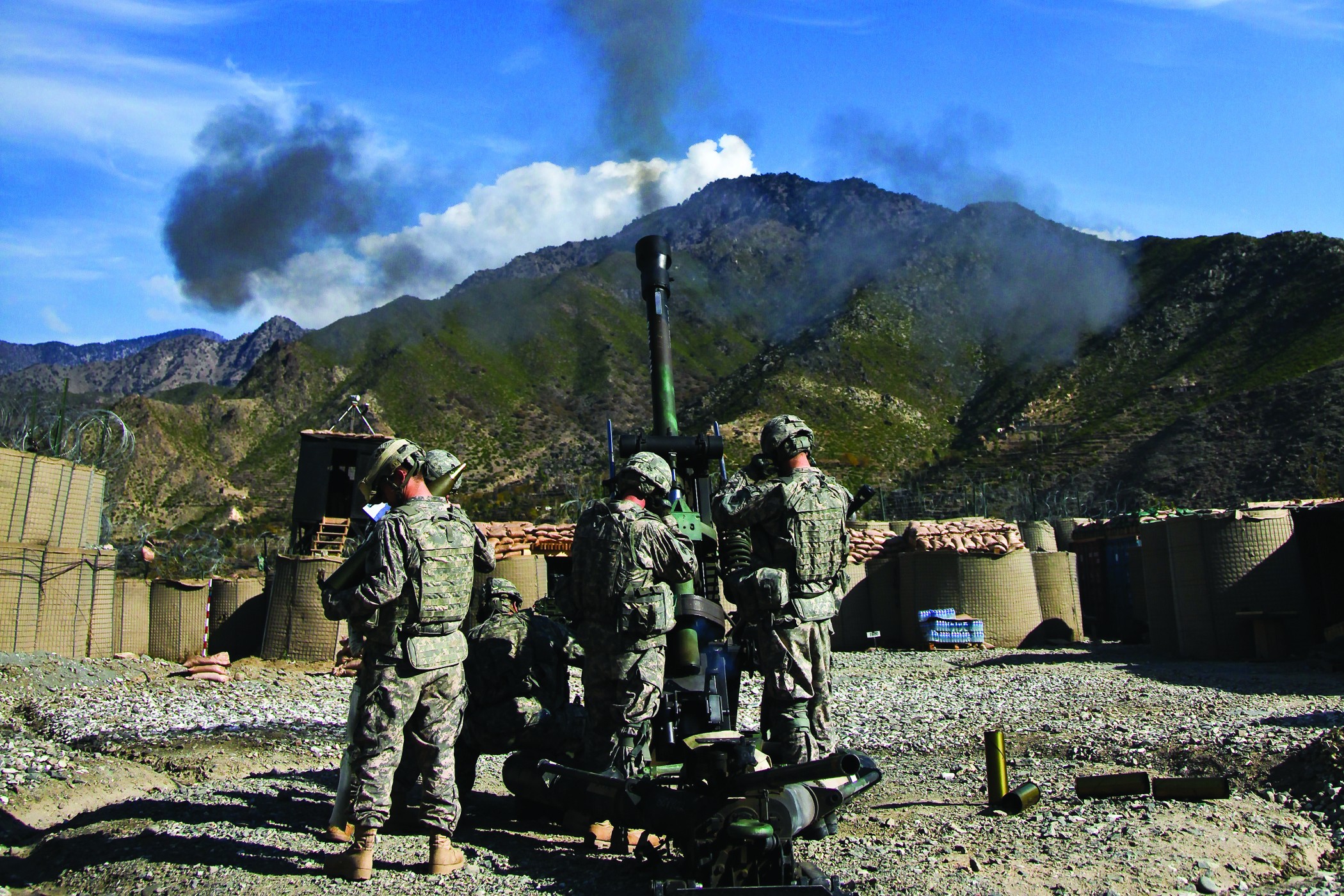ARLINGTON, Va. (Oct. 5, 2010) -- The Army's systems for rapid and reliable fire support and reports of unit readiness have earned top Department of Defense honors for their efficiency and success in adapting to the demands of modern war.
The Advanced Field Artillery Tactical Data System and the Defense Readiness Reporting System-Army were both recently selected as winners of the 2009 DOD "Top 5 Systems Engineering Program Awards" recognizing acquisition program excellence in systems engineering. Both AFATDS and DRRS-A are assigned to Project Manager Battle Command of the Program Executive Office Command, Control and Communications -Tactical.
"These awards are truly a recognition of the expertise of acquisition workforce and quality systems- engineering work being done by our PMs all across ASA(ALT) [Office of the Assistant Secretary of the Army for Acquisition, Logistics, and Technology]," said Terry Edwards, director of system of systems engineering for ASA(ALT). "They highlight the trend in the Army to get a better quality, more integrated product to the warfighter through the use of engineering best practices."
Evaluated by a panel of senior leaders from across the Department of Defense, the winning programs received high marks for innovative approaches to user-developed collaboration, rapid development and risk management.
"This award exemplifies Project Manager, Battle Command's dedication and commitment to continuous process improvement in systems engineering," said Brig. Gen. N. Lee S. Price, the PEO for C3T. "The team has efficiently synchronized capabilities to enhance collaboration among warfighters and partnered with its users to leverage their lessons-learned to develop better technologies, with cost savings in mind."
As the provider of automated fire support across the joint spectrum of operations, AFATDS manages and tasks weapons systems including mortars, field artillery, missiles, fixed and rotary-wing air support and naval surface-fire support.
The heart of AFATDS is its precise ability to engage targets with the right fire support while preventing fratricide, officials said. Its interoperability with other military branch and allied systems magnifies its value on the battlefield, they said.
While AFATDS is a large, complex and mature system - it began worldwide fielding in 1996 and has delivered nine updated versions since then - it is also flexible. The program's ability to constantly adapt and meet the changing needs of the warfighter is a direct result of its efficient and disciplined systems engineering practices, officials said.
"AFATDS is the premier command and control fire-support system that provides the right weapon, at the right place, at the right time across the joint spectrum of operations," said Gary Notte, product director for Fire Support Command and Control of PM BC. "It is through the use of not only best engineering practices, but the uncommon cohesion of the combat developer, program office, and the materiel developer that we are successful in rapidly providing the needed capabilities effectively to meet the changing needs of the warfighter on today's battlefield."
To streamline its processes, AFATDS has used an incremental design-build-test method as it has developed, with each improvement building on the last in order to rapidly equip Soldiers with the capabilities they need. Nearly a third of AFATDS system engineers previously served as direct users during their military service, thereby bridging the gap between developer and user.
The AFATDS team also works closely with the field to incorporate improvements and lessons learned from operations in Afghanistan and Iraq.
Such teamwork is also the norm for DRRS-A, the system that provides Army leaders with detailed, up-to-date unit readiness information.
As Army missions have diversified - including combat, stability and support, and disaster response - the reliable, automated data delivered by DRRS-A has allowed leaders to quickly adapt to situational demands.
With a few clicks on any classified laptop or desktop computer, commanders can access mission-critical information, including personnel levels, training status, equipment availability and equipment serviceability. A recent web-based Force Projection update further enhances the system, allowing action officers to track and manage units from notification to deployment.
To ensure that warfighters' needs are met, the DRRS-A team stresses close collaboration between users and developers, identifying priorities, suggesting improvements and ultimately shortening the development cycle.
"DRRS-A is a powerful example of how a partnership between materiel providers and their warfighting customers can work together to quickly provide useful, relevant, and low-cost capabilities," said Lt. Col. Brian J. Lyttle, DRRS-A product manager. "This allowed the Army to rapidly replace and retire systems while maintaining operational effectiveness."
The other Army winner of the Top 5 award was PEO Intelligence, Electronic Warfare and Sensors, for the Base Expeditionary Target & Surveillance System - Combined, known as BETSS-C. The winners will receive their awards at the 13th Annual NDIA Systems Engineering Conference, Oct. 25-29 in San Diego, Calif.
(Claire Heininger is an employee of Symbolic Systems Inc., and supports the Army's PEO C3T MilTech Solutions.)
Related Links:
U.S. Army National Guard Battle Command Training Center, Fort Leavenworth


Social Sharing